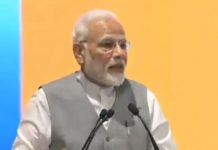In a thriving film industry, Gattu is one of a tiny minority of movies for young audiences. Aradhna Wal asks why

IN A country of 500 million children, a good children’s movie is rare. Here, children’s films are often corny morality tales (remember Jajantaram Mamantaram and Bhoot Unkle), turning off kids and their parents. Rajan Khosa’s Gattu breaks free of that formula. Clever and charming, Gattu is the first of 114 films produced by the Children’s Film Society of India (CFSI) to secure a commercial release, on 20 July. Adored by critics, it received a special mention at the 62nd Berlin Film Festival and awards at the Indian Film Festival of Los Angeles.
Set in Roorkee, it is the story of an illiterate nine-year-old orphan, Gattu, played with spunk by Samad Mohammad. He is a street-smart child, who works in his uncle’s scrapyard, but never an object of pity. A kite-flier extraordinaire, his greatest foe is not the neighbourhood bully, but a mysterious kite ‘Kaali’ that knocks every other kite out of the sky. To defeat it, Gattu has to access the highest roof — that of the nearby school. He cons his way into the classroom as a bona fide student.
Made on a budget of Rs 2.5 crore, Gattu follows in the footsteps of Stanley Ka Dabba and I Am Kalam — rare examples of mature children’s films that made it to the theatres. Director Rajan Khosa and former CFSI chairperson Nandita Das agree that despite a massive audience, filmmakers are defeated by a conservative market. “Distributors tell us that it’s a lovely film, with its heart in the right place, but without commercial value,” says Das, “We got lucky with Rajshri Productions who took on this movie.” Adds Khosa, “We go up against mainstream movies with huge budgets for publicity.” Theatre owners prefer to screen mainstream fare, even with the option of multiplexes. Parents eager to show their children Gattu told Das that Delhi theatres replaced it with other movies at the last minute. Das’ frustration is clear — how is word of mouth supposed to spread if no one can watch the film?
Khosa relates how the education ministry refused to help, stating that if they supported one film, they’d have to support others. “We need entertainment for children. They are growing up on an appetite of Rowdy Rathore and Dabangg,” says Das. Children’s films get relegated to festival films. A well-made movie appeals to the child in adults, a fact most movers and shakers in the marketing business forget. Stanley… director Amole Gupte echoes this. He, however, disagrees on there being a ready audience. “People don’t want to watch films that would inspire their kids. There needs to be a radical change in taste. I loved Gattu but it barely earned Rs 15 lakh in its first week. Kalam only made Rs 65 lakh. Stanley made around Rs 2.5 crore, but people knew me from Taare Zameen Par.”
Both filmmakers agreed on the necessity of such movies. “I use cinema to address children’s issues,” stresses Gupte. Khosa took his movie to small towns where kids told him that this was the first movie that was about them. “Street children are smarter than we give them credit for. If my child cannot respect my maid’s child, then there is something wrong.”
Aradhna Wal is a Sub-Editor with Tehelka.
aradhna@tehelka.com













